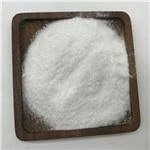Chemical Applications in Wastewater Treatment
Wastewater treatment is a vital process in ensuring clean water is returned to natural bodies and that pollutants are effectively removed from municipal and industrial sewage. This process often employs a variety of chemicals, each serving specific purposes in the removal of contaminants. The chemicals used in wastewater treatment can be categorized into several groups, including coagulants, flocculants, disinfectants, pH adjusters, and nutrient removal agents. Understanding the functions and applications of these chemicals is essential for effective wastewater management.
Coagulants and Flocculants
Coagulation and flocculation are among the primary processes used in wastewater treatment to remove suspended solids. Coagulants, such as aluminum sulfate (alum) and ferric chloride, are added to the wastewater to neutralize the charges of the suspended particles, allowing them to clump together. This process is known as coagulation. Once particles coagulate, flocculants, such as polyacrylamide, are introduced to enhance the aggregation of the particles into larger clusters or “flocs.” The larger flocs can then be more easily removed through sedimentation or filtration, thereby improving the overall quality of the treated water.
Disinfectants
Disinfection is a critical step in the wastewater treatment process to eliminate pathogenic microorganisms. Common disinfectants include chlorine, chloramines, ozone, and ultraviolet (UV) light. Chlorine is widely used due to its effectiveness in killing bacteria and viruses, although its use has raised concerns about the formation of toxic by-products, such as trihalomethanes (THMs). Chloramines, formed by combining chlorine with ammonia, are less reactive and provide a longer-lasting disinfectant effect, making them suitable for certain applications.
Ozone is another powerful disinfectant that can effectively inactivate a wide range of microorganisms. It has the advantage of decomposing into oxygen, leaving no harmful residues. However, its implementation requires specialized equipment and monitoring due to its instability and cost. Similarly, UV light disinfection offers a physical method to deactivate pathogens without the addition of chemicals; however, its effectiveness depends on water clarity and the intensity of the UV source.
pH Adjusters
what chemicals are used in wastewater treatment

The pH of wastewater can significantly impact the effectiveness of various treatment processes. Chemicals such as sulfuric acid and sodium hydroxide are commonly used to adjust pH levels to optimize conditions for chemical reactions, coagulation, and disinfection. For instance, acidic conditions may enhance the solubility of certain heavy metals, making them easier to remove. Conversely, alkaline conditions can improve the precipitation of phosphates, facilitating nutrient removal in biological treatment processes.
Nutrient Removal Agents
In many treatment facilities, the removal of nutrients, particularly nitrogen and phosphorus, is essential to prevent eutrophication in receiving water bodies. Various chemical agents can be employed for nutrient removal. For nitrogen removal, chemicals such as sodium nitrate or ammonium sulfate can support biological nitrification and denitrification processes. Meanwhile, phosphorus can be precipitated out of solution using coagulants like iron salts or aluminum salts, which bind to phosphate ions, allowing for easier removal.
Emerging Chemicals and Technologies
As environmental regulations become stricter and the understanding of wastewater composition evolves, new chemicals and technologies are being developed to improve treatment processes. For example, advanced oxidation processes (AOPs) utilize strong oxidants like hydrogen peroxide in combination with UV light or catalysts to degrade persistent organic pollutants effectively. Additionally, bioremediation techniques are being explored that use naturally occurring bacteria and enzymes to break down contaminants, emphasizing a more sustainable approach.
Conclusion
The use of chemicals in wastewater treatment is indispensable for maintaining public health and protecting the environment. From coagulants and disinfectants to pH adjusters and nutrient removal agents, each chemical plays a crucial role in addressing different aspects of wastewater contaminants. However, with the continuous advancements in treatment technologies and the growing awareness of environmental sustainability, the wastewater treatment industry must evolve to incorporate safer and more efficient chemical practices. Thus, ongoing research and innovation will not only enhance wastewater management strategies but also contribute to the overall protection of our water resources.

